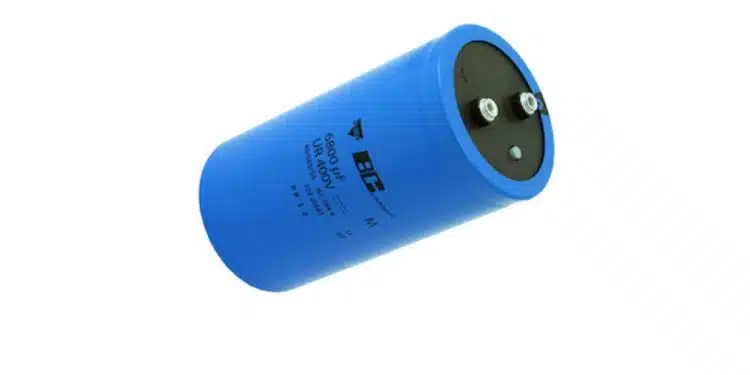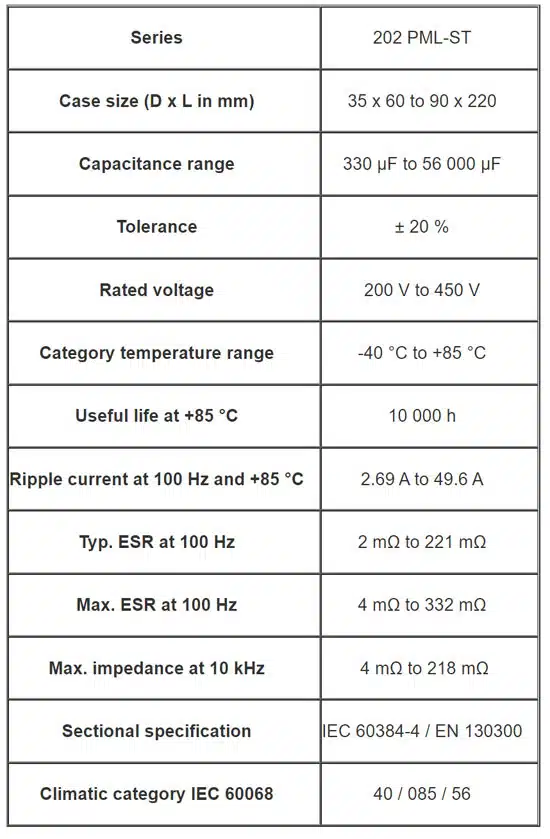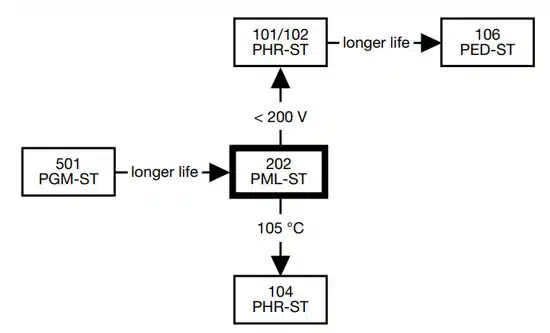Vishay releases new screw-terminal aluminum electrolytic capacitors featuring high CV values in smaller case sizes than previous-generation solutions, while providing increased ripple current and lower ESR.
Vishay Intertechnology introduced a new series of screw-terminal aluminum electrolytic capacitors that allow designers to pack more energy storage into less space. Available in 11 case sizes ranging from 35 mm by 60 mm to 90 mm by 220 mm, the Vishay BCcomponents 202 PML-ST series offers high capacitance / voltage (CV) values in smaller case sizes than previous-generation solutions, while providing increased ripple current to 49.6 A, lower ESR down to 2 mΩ, and a long useful life of 10 000 h at +85 °C.
Featuring a cylindrical aluminum case insulated with a blue sleeve and pressure relief in their sealing disc, the electrolytic capacitors released today provide high CV combinations from 56 000 µF at 200 V to 15 000 µF at 450 V. For example, a CV rating of 2200 µF / 400 V — previously available in the 65 mm by 105 mm case size — is now available in the smaller 50 mm by 105 mm case size. For CV ratings with a similar case size to previous-generation solutions, the capacitors offer improved ripple current and ESR. For example, a CV rating of 4700 µF / 400 V offers 12 % higher ripple current and 16 % lower ESR.
As polarized aluminum electrolytic capacitors with a non-solid electrolyte, the RoHS-compliant devices are ideally suited for filtering, buffering, and energy storage in pulsed power applications with a required lifetime of 10 to 15 years. Typical end products include industrial motor drives; rail traction for trains and subways; welding equipment, HVAC, and UPS; wind turbines and solar power inverters; and medical X-ray equipment.
Device Specification Table:
Features
- Long useful life: 10 000 h at +85 °C
- Low ESR in smaller case sizes compared to the 102 PHR-ST series
- Available in case sizes up to Ø 90 mm x 220 mm
- Polarized aluminum electrolytic capacitors, non-solid electrolyte
- Large types, cylindrical aluminum case, insulated with a blue sleeve
- Pressure relief in the terminal disc
Applications
- Buffering and filtering
- Motor drives, inverters, UPS, and traction systems
- Pulsed power supplies
- Energy storage
- Welding
- Wind turbines
- X-ray equipment




































